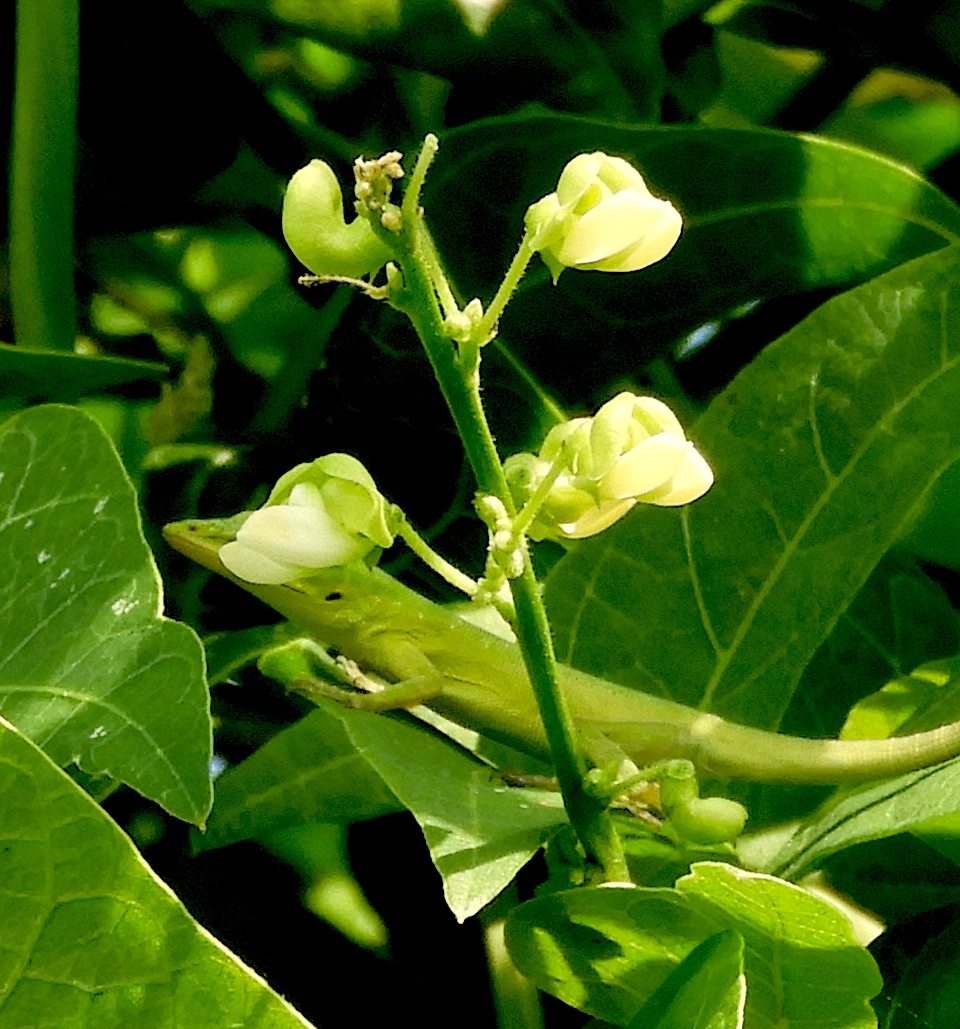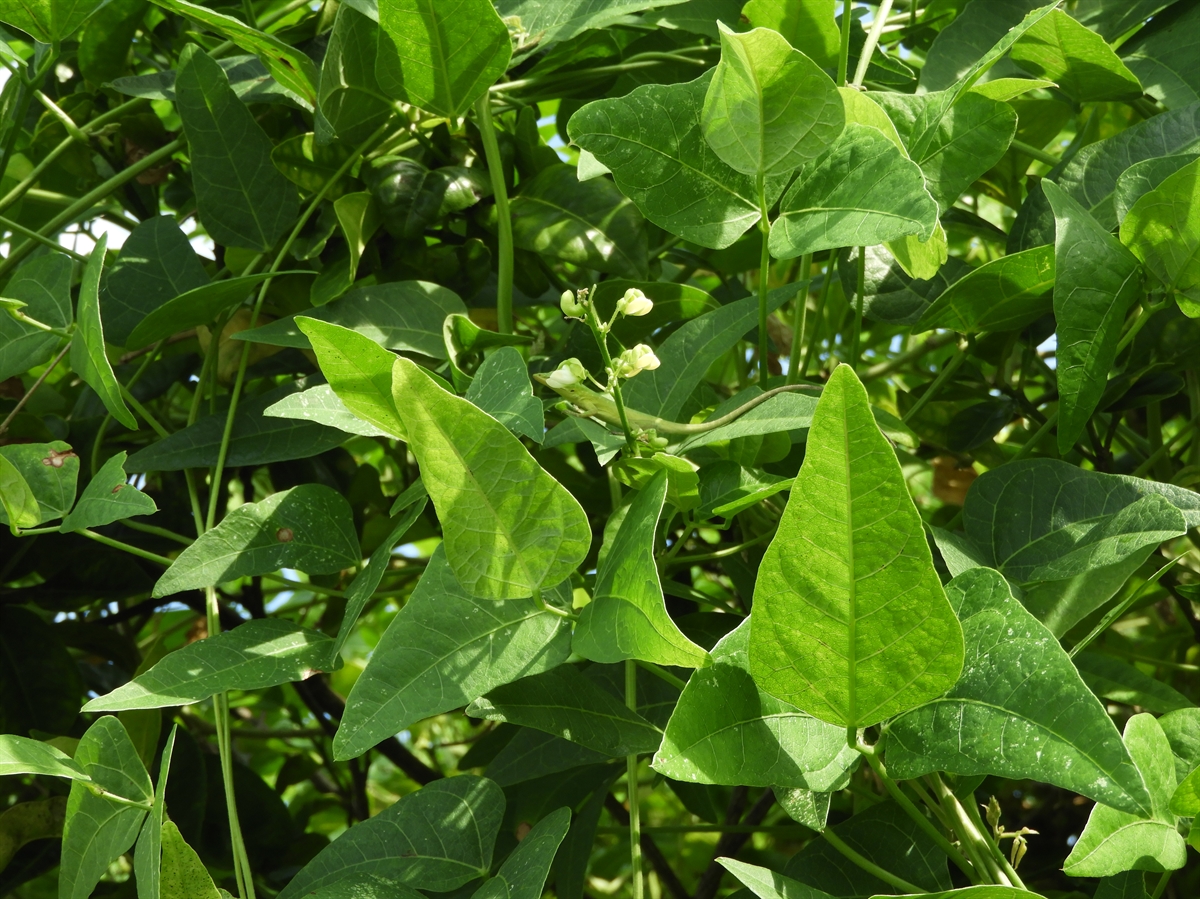Habit: Phaseolus lunatus grows as an annual vine. The trifoliate leaves are arranged alternately with lanceolate stipules at the petiole base. The leaflets are ovate/deltoid/rhombic, to 10 cm in length, with an acute or acuminate leaf apex and an entire margin. The lateral leaflets smaller than the petiolate terminal leaflet.
The complete, perfect, zygomorphic flowers are arranged in few flowered, pubescent, terminal racemes. The calyx has 5, partially fused, pubescent, green sepals forming a tube with the sepal lobes the same length as the tube. The corolla has 5, white to purple, the upper enlarged to form the banner and the lower 2 fused to form the keel. There are 10 (9 + 1), unfused stamens. The ovary is superior and has a single locule with 4-6 ovules. The fruit is a 3 -4 seeded legume, up to 10 cm in length, at maturity.
Habitat: Phaseolus lunatus grows in Human Altered environments (farms, gardens, yards).
Distribution: Phaseolus lunatus is NOT native to the Lucayan Archipelago but is grown on many of the islands. It is native to Central and South America but is now grown around the world.
Medicinal/Cultural/Economic usage: Phaseolus lunatus is not known to be used medicinally in the Lucayan Archipelago.
It is grown as a food crop for its nutritious and protein filled seeds.

